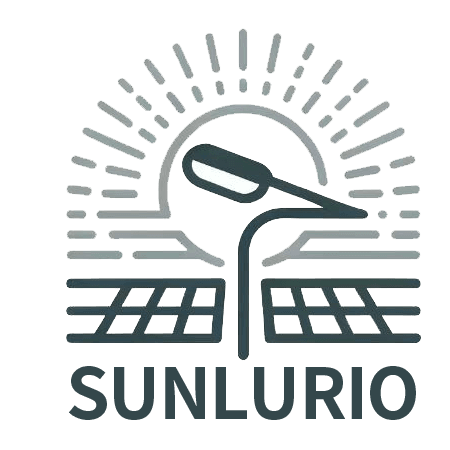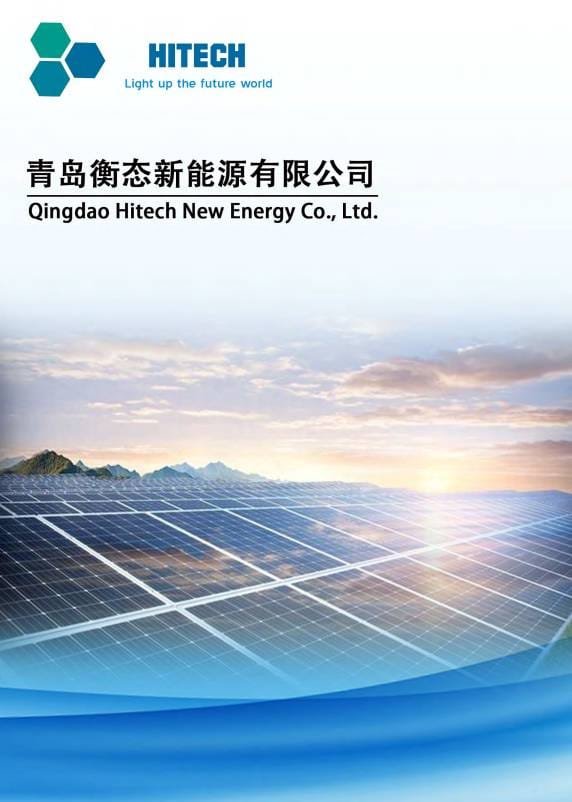A solar street lighting system is more than a light on a pole — it’s a decentralized energy asset. Across Africa, it’s reshaping how EPCs, governments, and NGOs light roads, communities, and facilities without relying on unstable grids.
After 15 years in solar projects from Uganda to Kenya, I’ve seen both the brilliance and the breakdowns of these systems — and I’ve learned one truth: solar lighting doesn’t fail because of technology. It fails because of design, deployment, and decision-making.
This guide is written for procurement officers, EPC project managers, and institutional buyers who want to make confident, long-term decisions about solar lighting investments in Africa.
What Is a Solar Street Lighting System (and Why It Matters for African Buyers)?
A solar street lighting system is a self-contained setup that uses solar panels to charge batteries and power LED lamps from sunset to sunrise — independent of the grid.
Each unit typically includes:
- A solar panel for energy collection
- A battery (LiFePO₄ or lithium-ion) for storage
- A controller to regulate charging and lighting cycles
- An LED luminaire optimized for efficiency and long life
Why this matters
For buyers working across regions where power supply is unreliable or infrastructure is minimal, these systems deliver:
- Zero electricity cost after installation
- Rapid deployment with no trenching or wiring
- Reduced vandalism risks (with proper mounting)
- Proven reliability in off-grid, remote, or high-failure grid zones
In short: Solar street lights are not just sustainable — they’re financially strategic.
How Does a Solar Street Lighting System Actually Work?
In principle, it’s simple: sunlight in, light out. In practice, every stage can make or break your system.
Typical Operation Cycle
| Time | Process | Key Component |
|---|---|---|
| Daytime | Panel captures sunlight and charges the battery through the controller. | Solar Panel + MPPT Controller |
| Nighttime | Controller powers the LED lamp from the battery, often using motion or dimming functions for efficiency. | Battery + LED Light |
In Arusha, we once recorded a 10% loss in real-world performance simply due to dust accumulation on panels — a common challenge in East African climates.
Pro tip for EPCs: Prioritize panel tilt and orientation during design; even a 5° error can cost you 8–12% energy loss annually.
What Are the Main Components (and Their Common Pitfalls)?
🔋 Battery: The Real Heart of the System
- Recommended: LiFePO₄ for long life (up to 8 years)
- Common Pitfall: Direct sun exposure in metal housings — we lost 20% lifespan in Baringo due to thermal stress.
- Buyer Tip: Always confirm thermal management specs and IP ratings before purchase.
☀️ Solar Panel: Efficiency vs. Reality
- Best Choice: Monocrystalline panels, 18–22% efficiency.
- Common Pitfall: Dust, bird droppings, and wrong tilt angles reduce performance.
- Buyer Tip: Ask for panel degradation rate — top suppliers disclose this (typically 0.4–0.6% per year).
⚙️ Controller: Small Part, Big Impact
- MPPT offers 15–25% better charging efficiency than PWM.
- Common Pitfall: Choosing PWM to save $20 per unit often results in double the loss due to poor charging and premature battery failure.
- Buyer Tip: Always request MPPT as standard for long-term ROI.
💡 LED Lamp: Efficiency and Optics
- Key Metric: Luminous efficacy (lm/W).
- Cheap LEDs: 110–130 lm/W
- Premium LEDs: 150–180 lm/W
- Common Pitfall: Poor optical design leads to uneven road illumination.
- Buyer Tip: Review IES light distribution curves, not just wattage.
Which Design Type Fits Your Project Best?
| Type | Key Benefits | Weakness | Ideal Application |
|---|---|---|---|
| All-in-One | Fast install, compact, integrated | Heat buildup, less serviceable | Schools, compounds, small roads |
| Split-Type | Better heat control, flexible orientation | Slightly higher installation labor | Highways, municipalities |
| Semi-Integrated | Balance between aesthetics and serviceability | Battery exposure risk | Suburban or peri-urban areas |
In Mbarara District, split-type systems achieved the best 5-year performance, while all-in-one units were favored for rapid deployment on tight deadlines.
What Common Challenges Do Buyers Face in Real Projects?
Even the best system struggles under poor field realities. Across over 120 installations, these are the recurring problems we’ve seen:
- Improper foundations → poles tilt or collapse in heavy rains.
- Incorrect wiring → reversed polarity damages controllers.
- No maintenance plan → dust reduces solar yield up to 30%.
- Inadequate security → vandalism in high-traffic areas.
- Overpromised autonomy → batteries undersized for rainy seasons.
Lesson learned: Always match system specs with the actual site — not the brochure.
How Much Do Solar Street Lighting Systems Cost in Africa?
Buyers often focus on unit cost instead of total ownership. In our experience, the TCO (Total Cost of Ownership) gives a far clearer picture.
| Configuration | LED Power | Battery | Average Installed Price (USD) | Typical Lifespan |
|---|---|---|---|---|
| Basic Rural Model | 30W | LiFePO₄ 20Ah | $250–$320 | 5–7 years |
| Urban Smart Model | 100W | LiFePO₄ 60Ah | $650–$800 | 8–10 years |
In a Morogoro project, switching from lead-acid to lithium increased upfront cost by 25% but cut 5-year replacement costs by half.
Procurement Tip: Always include poles, transport, and civil works in your budget. Lighting hardware is rarely more than 60% of total project cost.
How Should You Plan Installation to Avoid Field Failures?
Solar lighting installation in Africa isn’t plug-and-play — it’s logistics, weather, and coordination.
Real-world lessons:
- In Kibaha, a 6-hour cement delivery delay forced temporary anchoring — one pole collapsed in wind overnight.
- In Gulu, cloudy weather during commissioning led to early battery complaints that later resolved after full charging cycles.
Best Practices for EPC Teams:
- Verify soil bearing capacity before civil work.
- Cure concrete bases for at least 48 hours before mounting.
- Document every connection for warranty tracking.
- Conduct nighttime lighting uniformity checks before handover.
What About Maintenance — Is It Really “Zero”?
Solar street lights are low-maintenance, not maintenance-free.
Realistic Maintenance Schedule
| Task | Frequency | Risk if Ignored |
|---|---|---|
| Panel cleaning | Every 3 months | 10–20% drop in generation |
| Battery inspection | Every 6 months | Sudden light failures |
| Pole & anchor check | Annually | Structural hazard |
| Controller diagnostics | Annually | Reduced system efficiency |
We once traced a full system outage in Lira to a $3 connector failure — proof that maintenance saves thousands.
What’s Next: Future Tech in Solar Street Lighting
Africa’s market is beginning to test:
- Smart lighting control with IoT-based monitoring
- Adaptive dimming responding to motion and daylight
- Next-gen batteries (graphene, sodium-ion, and solid-state)
These innovations are promising — but field reliability at 45°C, 70% humidity, and dust exposure is still being proven.
Until then, we prioritize technologies that survive the African field, not just pass lab certification.
Final Takeaways for Solar Lighting Buyers
After years of deployments, one lesson stands out:
Solar lighting succeeds where planning meets realism.
Key Buyer Checklist
✅ Choose LiFePO₄ batteries with MPPT controllers.
✅ Align system design with site conditions (solar radiation, dust, and theft risks).
✅ Budget for installation and O&M, not just hardware.
✅ Demand data transparency from suppliers — warranties, degradation rates, and component origins.
✅ Partner with experienced EPCs familiar with local conditions and logistics.
Solar isn’t just technology — it’s a relationship between design, durability, and the realities of African ground.
Why This Matters
For African cities, counties, and agencies racing toward energy independence, solar lighting is no longer an experiment — it’s the new baseline. The question isn’t whether it works, but whether it’s designed to work where you are.
Small details — correct tilt, solid foundations, protected batteries — decide the difference between a five-year success story and a one-year failure.
That’s where Sunlurio’s experience stands: not just delivering lights, but ensuring they stay lit.
Written by Yori Wang, Senior Project Manager at Sunlurio — sharing 15 years of field-tested solar and infrastructure experience across East and Central Africa.


